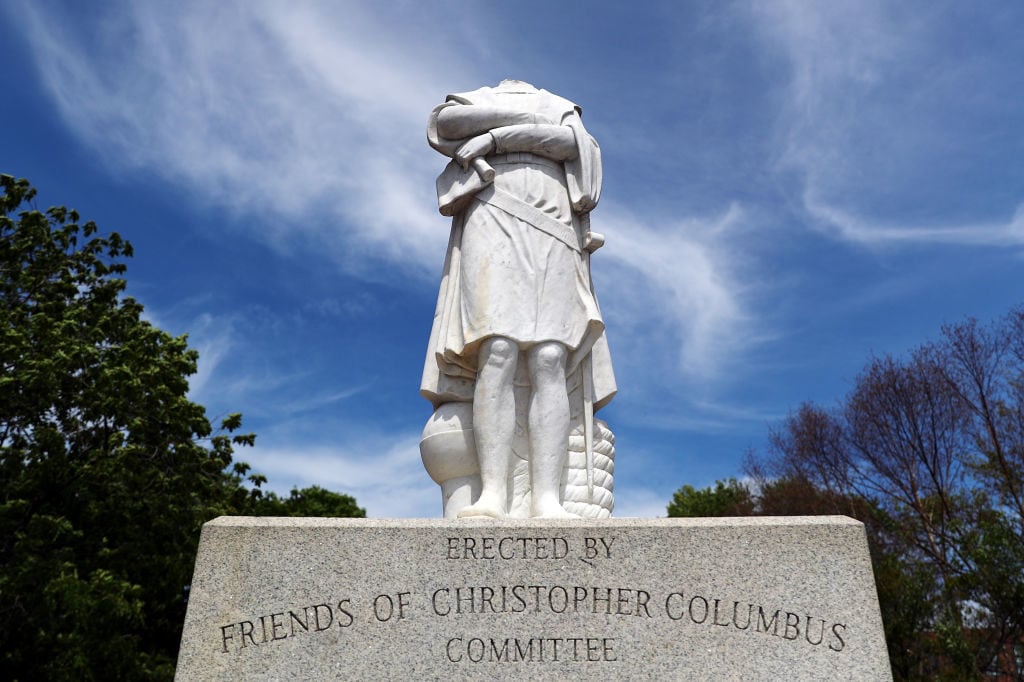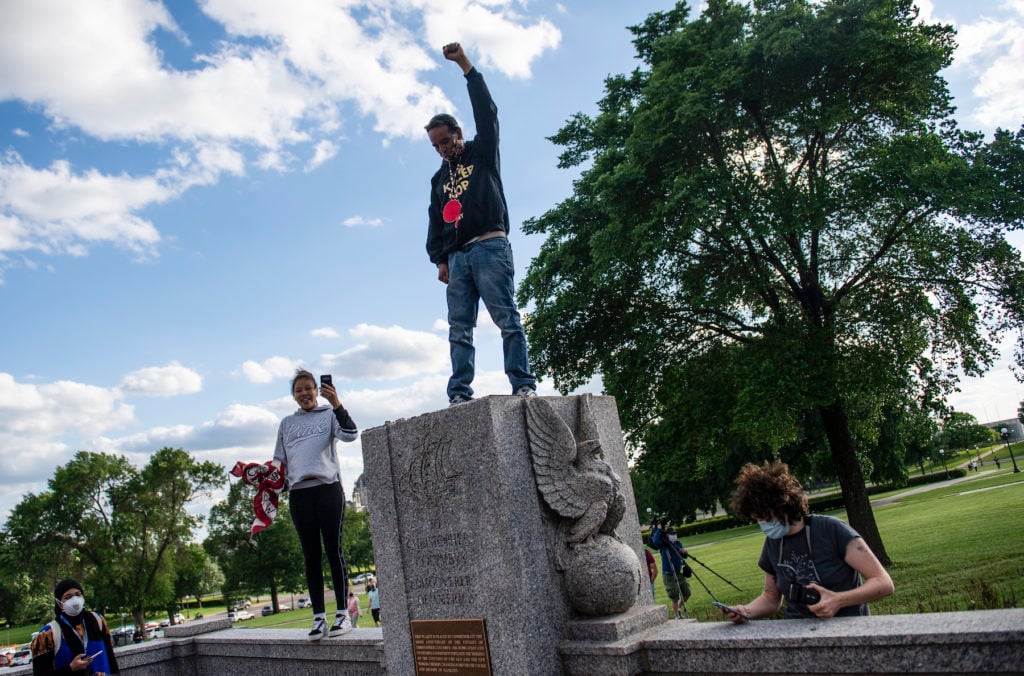Politics
Protesters Beheaded a Christopher Columbus Statue in Boston. Another, in Richmond, Was Tossed Into a Lake
A momentous day of activism was capped by Native American protesters toppling a Columbus statue in Minnesota.

A momentous day of activism was capped by Native American protesters toppling a Columbus statue in Minnesota.

Taylor Dafoe

The monuments continue to topple around the world—and in increasingly symbolic ways.
In Boston, two statues memorializing Christopher Columbus, the 15th century explorer who symbolizes the colonization of the Americas, were targeted by protesters last night.
In the city’s North End, an Italian marble monument of Columbus, located in a park named after him, was beheaded. This morning, the decapitated head lay next to its plinth, encircled by police tape, like a lurid crime scene.
The city’s mayor Marty Walsh announced after the incident that the statue would be removed from the park and put in storage, according to CBS Boston. Whether or not it will go back up has yet to be determined.
“Given the conversations that we’re certainly having right now in our city of Boston and throughout the country, we’re also going to take time to assess the historic meaning of this action,” Walsh told reporters today.
The statue, erected in 1979, has been vandalized numerous times, most recently in 2015 when it was covered in red paint and the words “Black Lives Matter” were spray-painted on its base. It was also beheaded in 2006.
Columbus is GONE. ? lLindsay Kagalis #rva pic.twitter.com/XaU9ZUs4ee
— Richmond Grid (@RichmondGrid) June 10, 2020
Meanwhile, in Richmond, roughly 1,000 protesters used ropes to topple an eight-foot-tall Columbus statue last night. They then proceeded to light it on fire and drag it into a shallow lake some 200 yards away. Placed next to the water was a sign that read, “Racism. You will not be missed.”
No one was arrested during the episode. Authorities removed the statue from the lake this morning.
The monument was put in place in 1927, and was the first such statue erected in memorial of the colonizer in the south, according to the Richmond Times-Dispatch.
“This continent is built on the blood and the bones of our ancestors, but it is built off the backs and the sweat and the tears and the blood and the bones of Africans,” said Vanessa Bolin, a member of the Richmond Indigenous Society, in a rally prior to the monument’s removal.
“We’re not here to hijack your movement. We’re here to stand in solidarity.”
How dare they pull Columbus out of the bottom of the lake he discovered
pic.twitter.com/einxeEeihB— Richmond Police (@BeQueerDoCrime) June 10, 2020
The befallen shrine to Columbus isn’t the only monument in Virginia’s capital city targeted by protesters in recent weeks. Five Confederate statues along Richmond’s Monument Avenue have also been attacked.
The city’s mayor, Levar Stoney, has pledged to take down the four municipally-owned monuments, while last week, Virginia governor Ralph Northam announced his own plans to remove the most statue infamous of the bunch—and the only one owned by the state—a memorial to Confederate commander Robert E. Lee. However, a local court has since blocked him from taking action for 10 days.

A man stands with his fist raised on the spot where a statue of Christopher Columbus, which was toppled by protesters, stood on the grounds of the State Capitol on June 10, 2020 in St Paul, Minnesota. Photo by Stephen Maturen/Getty Images.
On Wednesday night in Minnesota, several dozen protesters wrapped a rope around a statue of Christopher Columbus and dragged it off its pedestal to the ground outside the State Capital. Native communities have sought for years to remove the statue, and its toppling was described as a step towards healing.
The protest was led by American Indian Movement activist Mike Forcia. According to the Star Tribune, a State Patrol captain on the scene informed him that he would be charged with criminal damage to property.
“I’m willing to take that,” Forcia is quoted as saying. “The paradigm shift is happening and it was time.”